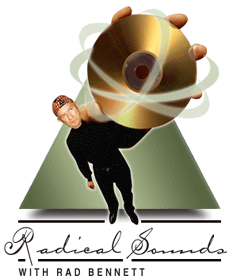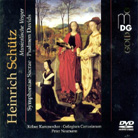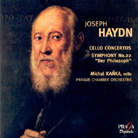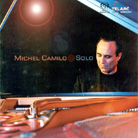 |
| March 1, 2005 Where Are High-Rez Recordings Going?  When I recently asked several record producers if they will
support the high-resolution audio formats, SACD and DVD-Audio, they promptly answered
"yes." But my mother used to tell me that actions speak louder than words, and
action on the hi-rez front is not something I see or hear about every day. The number of
releases has increased, but at least one major studio, EMI, which produced some excellent
DVD-A releases when it was new, has never followed up with additional titles. And though
Universal is putting out some Mercury Living Presence releases and BMG has just issued a
second group of RCA Living Stereo titles, the hype has been about the fact that both
series are of three-channel recordings, not about the extra bits and higher sampling
rates. When I recently asked several record producers if they will
support the high-resolution audio formats, SACD and DVD-Audio, they promptly answered
"yes." But my mother used to tell me that actions speak louder than words, and
action on the hi-rez front is not something I see or hear about every day. The number of
releases has increased, but at least one major studio, EMI, which produced some excellent
DVD-A releases when it was new, has never followed up with additional titles. And though
Universal is putting out some Mercury Living Presence releases and BMG has just issued a
second group of RCA Living Stereo titles, the hype has been about the fact that both
series are of three-channel recordings, not about the extra bits and higher sampling
rates.
Producers and some audio journals have confused the public from the get-go about high resolution, acting as if multichannel recording was required for it rather than being merely an option. I have nothing against multichannel recordings, many of which I have praised in this column and elsewhere on the SoundStage! Network. But the main point about SACD and DVD-A is that the resolution of the channels, however many or few, is higher than that afforded by regular CD reproduction. Producers of hi-rez recordings have continually botched the promotion of SACD and DVD-A, confusing the public first with competing systems and, now that universal players are available, with a lack of titles in local stores, which produces little to no visibility for them. Companies continue to double-inventory releases when the hybrid SACD format and, to a lesser extent, the DualDisc would allow the release of just one version that would cover all bases. That’s bad enough, but a worse thought has surfaced lately. Perhaps there aren’t enough people who want hi-rez sound, or can even tell the difference, to make such a venture worthwhile to companies that might otherwise be willing to spend the bucks it would take to make it fly. Every Monday night, on the way to a regular meeting, I pass through Brunswick, Maryland, a charming-looking railroad town that seems like a place from a gentler, kinder time -- until a train goes through. Then it’s all noise. How, I ask residents, can you sleep through that? "Oh, you get used to it in a little bit," they say. I listen to a wonderful new SACD release of a classic RCA Living Stereo title and ask a friend how he can listen to the CD version any longer. "Oh, you get used to it. It’s good enough." Good enough? Is that where high fidelity has gone? Have we gotten so used to mediocre or even excellent sound that no one but audiophiles and high-end fanatics will strive for outstanding sound? We live in an Age of Noise. You can’t escape it. For most people, noise is a part of daily life. To shut out the noise, have we shut down that part of our hearing that can discern between average and superior sound? Is the CD now simply "good enough" for us? And what of the big distraction -- the video revolution? First the DVD, now high-definition broadcast, and, on the near horizon, blue-laser systems that will allow DVDs to be hi-def. It’s easier to "see" differences here than to "hear" them with high resolution. I watched a hi-def broadcast of a Gloria Estefan concert the other night. The video had twice the resolution I had two years ago, but though the sound was better than broadcast used to be, it was still only of CD quality. The blue-laser formats will be "capable" of carrying hi-rez sound as good as what we have now. But will producers provide it, or has the general public, by ignoring SACD and DVD-A, told them that it is not wanted? Will everyone soon be buying videodiscs at Wal-Mart, getting hi-def video with CD-quality sound? I think that the video revolution and settling for CD-quality sound in an Age of Noise has blocked the advance of audio for a large percentage of the public. This is an alarming fact to anyone who deeply cares about sound -- not the quantity of it, but the quality. But while they last, I’ll continue to revel in the purer sounds of high-resolution recordings and to pass my recommendations along to you. Here are the three most recent additions to Rad’s Hall of Great-Sounding Hi-Rez Recordings. Enjoy while you can.
Last month I reviewed a disc of music Giovanni Gabrieli had written to be performed at San Marco in Venice, noting how greatly the antiphonal music of renaissance composers benefited from multichannel recording. German composer Heinrich Schütz studied with Gabrieli for a spell, and the music he wrote for performance in Dresden was meant to envelop the listener. Musicians were placed in various locations throughout the church. Schütz knew the church’s acoustic well and took full advantage of it. MDG’s wizard CEO and chief engineer, Werner Dabringhaus, has entirely succeeded in re-creating these effects while using as his venue the Mellachthonkirche in Köln-Zollstock. Dabringhaus put the soloists and various choirs on raised platforms so they would sound as if singing from the galleries of the original performance location. This effect is probably more dynamic using MDG’s 2+2+2 setup, but it is very impressive in the more common 5.1-channel format. The responsorium "Saul, Saul, was verfolgst du mich" is hair-raising. Soloists and violins sing from the front while ripieno choruses comment from the rear. At points in the piece there are reverse echo effects, with sound being passed from the rear, fortissimo, to the front, pianissimo. The effect is awesome and impressive, and would be impossible in a two-channel recording. It would also be difficult for most performers, but the superb musicians for these sessions surmount every obstacle with virtuoso singing and playing -- the trombone choir is the best I have ever heard. Discounting the multichannel effects on this disc, the hi-rez sound scores in clarity and nuance from first note to last. The soloists have unusually good presence. If you have a good multichannel music setup, this disc is a must.
During Haydn’s lifetime he was credited with writing six concertos for cello and orchestra, only two of which have been authenticated, the first as recently as 1961. Both of the verified concertos were written during the composer’s employment by the Esterházy family, for the virtuoso players of the choice orchestra that Haydn had at his disposal. Michal Kanka plays them with grace and lyricism, and the Prague Chamber Orchestra supports him hand in glove. The Symphony 22, sandwiched by the concertos, proves the biggest delight on the disc. It was scored for two horns, strings, continuo, and a pair of English horns instead of the usual oboes. The Prague musicians, whose publicity loudly proclaims that they perform sans conductor, play this piece with vim, vigor, and vitality. The last movement, with its arrestingly high horn passages, is a special delight. Praga is one of the smaller companies now releasing many SACDs, and its belief in the format is borne out here. The sound has lots of transparency, though never at the expense of weight and presence, and the surround balance seems ideal. One gets a sense of being in a hall, which gives the instruments more of a three-dimensional presence. I would like to hear this orchestra in more of the early Haydn symphonies.
Pianist Michel Camilo is an international musician who hails from the Dominican Republic but has performed all over the world. On Solo he concentrates on three types of music: Brazilian songs, jazz standards, and his own eclectic compositions. The swaying, rhythmic Brazilian cuts are highlighted by two Jobim favorites, "Luiza" and "Corcovado" (aka "Quiet Nights"). The standards include "Our Love is Here to Stay," played in an uptown Manhattan style; a soulful, reflective rendition of "’Round Midnight"; and a glittering, virtuoso romp through "The Frim Fram Sauce." Camilo’s own compositions sound classically influenced. Many of them, such as "A Dream," shimmer in an impressionistic manner, while "Suntan" sounds like something Louis Moreau Gottschalk might have composed had he lived to play 21st-century jazz. Overall, Camilo’s style is more comfortable than innovative, but there’s nothing wrong with that. Telarc’s sound puts the piano right in the listening room, but not so close-up as to be uncomfortable. The instrument, spread across the front three channels, has excellent presence without ever sounding too aggressive. The rear channels are used for ambience, and come more into play as Camilo plays louder passages, especially those that include sharply accented bass notes. This is one of the best recordings of solo piano in the multichannel catalog. ...Rad Bennett
Ultra Audio is part of the SoundStage! Network. |
 Schütz: Musicalische
Vesper (Symphoniae Sacrae, Psalmen Davids)
Schütz: Musicalische
Vesper (Symphoniae Sacrae, Psalmen Davids) Haydn: Cello Concertos 1
& 2; Symphony 22 in E-flat, "Der Philosoph"
Haydn: Cello Concertos 1
& 2; Symphony 22 in E-flat, "Der Philosoph" Michel Camilo: Solo
Michel Camilo: Solo